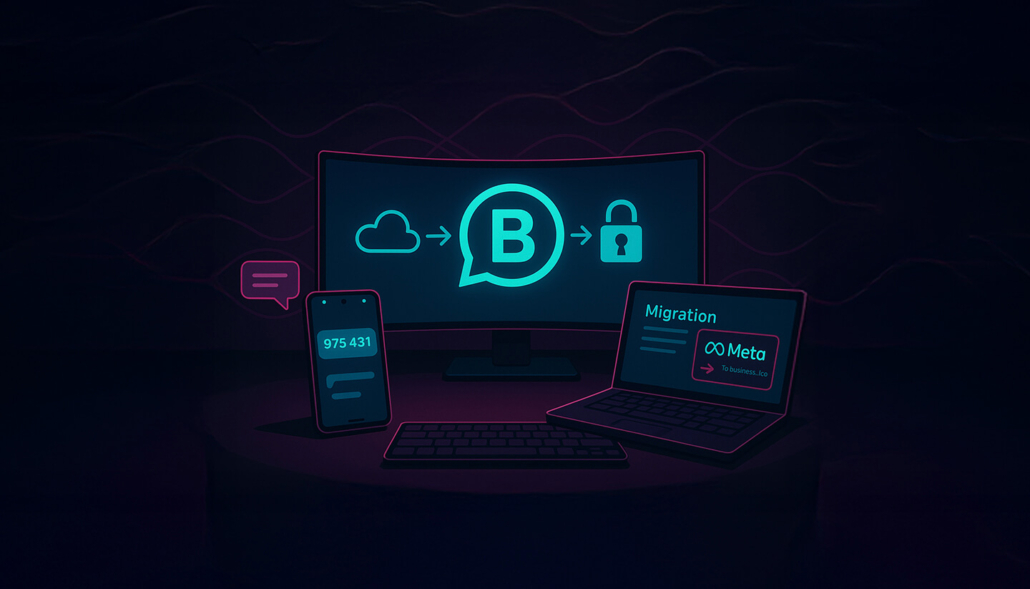The Communication Gap: Why Customers Leave Even When They Love Your Product
The package arrives two days late. No explanation. No apology. Just silence.
The software feature you rely on disappears overnight. No warning. No alternative. Just confusion.
The billing error sits unresolved for weeks. No updates. No timeline. Just mounting frustration.
These aren’t edge cases. They’re daily occurrences revealing what really happens: most companies have mastered the transaction but fumbled the relationship. They’ve optimized checkout flows and inventory systems while letting the most critical element—communication—operates on autopilot or does not work at all.
The cost of this silence? Far higher than most realize.
The Trust Deficit Nobody Wants to Address
Here’s the data point that should wake up every Customer Experience leader: 54% of customers believe companies need to fundamentally transform how they build relationships. Not tweak. Not improve. Transform.
This isn’t customers being demanding. It’s customers recognizing a chasm between what companies promise and what they deliver. That chasm lives in the space between transactions—the moments when customers need guidance, reassurance, or simply acknowledgment that they matter.
The economics are stark: two-thirds of the difference in brand profits can be attributed to variations in customer engagement, and communication drives that engagement. Companies that master the art of keeping customers informed don’t just retain more customers—they create more profitable ones.
Why? Because a well-informed customer is a satisfied customer, and satisfied customers spend more, stay longer, and tell others about you.
The solution isn’t complex or expensive. It’s consistent, thoughtful communication at the moments that matter most.
What Communication Actually Accomplishes
Let’s examine what happens when companies get this right:
The Conversational Commerce Revolution
Now, let’s examine the seismic shift in how communication itself occurs.
For decades, customer communication meant emails, phone calls, and increasingly desperate attempts to get people to check voicemail. Today, it means meeting customers where they already live—messaging apps.
Conversational commerce is transforming the entire landscape. Sales via chatbots, voice assistants, and conversational channels are projected to explode from $41 billion in 2021 to [$290 billion by 2025. That’s not growth. That’s a wholesale shift in how commerce happens.
Why Messaging Changes Everything
The power isn’t just convenience. It’s the fundamental change in relationship dynamics when you move from formal channels to conversational ones.
Email is asynchronous, formal, often ignored, creating distance. Chat is immediate, casual, expected, creating dialogue—like texting a friend rather than submitting a form to a corporation.
This matters enormously:
Real-time problem-solving: When customers have questions while browsing, chatbots answer instantly. No waiting. No phone trees. Just immediate answers at the exact moment of need, preventing cart abandonment by removing friction at the critical decision point.
Contextual personalization: Because chat platforms integrate with CRMs, every conversation can reference previous interactions, purchase history, and preferences. Instead of “Welcome, please enter your account number,” it’s “Hi Sarah! I see you bought the blue sneakers last week. How can I help?” This authentic, personal interaction dramatically improves retention.
Ongoing relationships: Unlike phone calls that end or emails that get buried, chat conversations persist. Customers can start Tuesday, return Friday, and pick up right where they left off. It becomes an ongoing dialogue rather than isolated transactions.
The WhatsApp Effect in Latin America
To understand messaging’s power, look at Latin America.
68% of users in LATAM say WhatsApp is the easiest way to connect with companies, and 81% of WhatsApp users communicate with brands through the app. This isn’t just a short lived preference. It’s fundamental expectation about how business communication happens.
Small retailers in Brazil discovered this during the pandemic. With physical stores closed, they turned to WhatsApp for the entire sales process—showcasing products, answering questions, processing orders, confirming payments. Many found conversion rates were actually higher through WhatsApp than websites because the conversation format allowed them to address hesitations and build confidence in real-time.
This pattern repeats globally. WeChat in China. WhatsApp in Europe and Latin America. Messenger in the US. The platforms vary, but the lesson remains: customers increasingly want to communicate with brands the same way they communicate with people they trust—through messaging.
The Strategic Framework: When and What to Communicate
Understanding that communication matters is easy. Knowing when and what to say? That’s where strategy separates the effective from the overwhelming.
Map to Journey, Not Calendar
The worst communication strategies are calendar-based: “We send a newsletter every Tuesday.” The best are journey-based: “We send specific messages when customers reach specific milestones or exhibit specific behaviors.”
Mapping communications to each journey phase—awareness, consideration, purchase, retention, advocacy—ensures interactions feel seamless and supportive rather than random or intrusive.
Awareness stage: Educational content helping customers understand their problem and potential solutions. No hard sell. Just value.
Consideration stage: Comparison guides, case studies, FAQ responses. Help them make informed decisions, even if they choose competitors.
Purchase stage: Clear next steps, expectation setting, immediate confirmation. Eliminate doubt.
Onboarding stage: Sequential guidance getting them to their first win quickly. Faster time-to-value reduces churn.
Active use stage: Tips, best practices, feature highlights timed to when they’re most relevant. Not when you want to send them, but when they need to receive them.
Renewal stage: Usage insights, ROI summaries, complementary recommendations based on actual behavior.
Each stage has different needs. One-size-fits-all messaging is the enemy of effectiveness.
Trigger-Based Precision
Beyond journey stages, smart communication responds to specific customer actions—or inactions.
Effective triggers:
- Cart abandoned? Helpful reminder within 2–3 hours, possibly with FAQ or limited-time incentive
- Product delivered but not activated? Setup assistance after 48 hours
- Feature launched solving a problem they complained about? Immediate notification
- 30 days without login? “We miss you” message with compelling reason to return
- High-value customer approaching renewal? Proactive outreach from a human
Triggers make communication feel responsive rather than arbitrary. The customer took an action (or didn’t), and you’re responding appropriately. It feels like attention, not spam.
The Frequency Balance
Here’s the tightrope: communicate too often and customers tune out. Communicate too rarely and they forget you exist.
The solution isn’t a magic number. It’s matching frequency to value delivered.
For general updates, once a week or every other week is probably sufficient. But if something urgent or truly valuable occurs—a major sale, critical security update, breaking industry news—communicate immediately regardless of when you last sent something.
The test: if you can’t articulate why this specific customer would find this specific message valuable right now, don’t send it.
Also critical: let customers control frequency when possible. Preference centers allowing people to choose weekly vs. monthly digests dramatically reduce unsubscribes while improving engagement on messages that do get sent.
Content That Actually Helps
Before hitting send, ask: “If I received this, would I think ‘I’m glad they told me that’ or ‘Why did they bother me?’”
Communications should be clear, avoid jargon, and get straight to the point. They should lead with customer benefit, not company achievement. They should make the next step obvious when action is needed.
Good: “Your uploads will now process 3x faster. We’ve upgraded our systems specifically to save you time. No action needed—just enjoy the speed boost.”
Same information. Completely different framing. One makes you care. The other makes you yawn.
The Pitfalls That Sabotage Good Intentions
Even teams that understand communication’s importance often stumble into predictable traps:
Companies think in terms of products, functions, and policies—and that comes out in their communication. The language becomes stiff, laced with jargon, utterly forgettable.
Customers don’t want to hear from “The Customer Success Team at Enterprise Solutions Corp.” They want to hear from Sarah, who understands their problem and wants to help.
Write like a human talking to another human. Use contractions. Ask questions. Show personality. If you wouldn’t say it out loud to a customer in person, don’t write it in an email.
When something goes wrong—a security breach, major outage, shipping disaster—some companies go quiet, hoping the problem resolves before too many notice.
This is catastrophic. Problems happen. Companies are run by humans, and humans make mistakes. What customers can’t forgive is being kept in the dark about problems affecting them.
Failing to communicate during crises erodes trust faster than almost anything else. Conversely, transparent communication during difficulties often strengthens relationships because it demonstrates integrity and respect.
Have a crisis communication plan ready before you need it. When something goes wrong, over-communicate rather than under-communicate. Provide frequent updates even if the update is “we’re still working on it.”
Communications that focus on “we did this, we offer that” without framing customer benefit fall flat.
Your customers don’t care that you spent six months building a new feature. They care whether that feature solves their problem.
Lead with why the customer should care. Start every message by answering “what’s in it for me?” from the customer’s perspective.
When your email says one thing, your chatbot says another, and your phone support gives a third answer, trust evaporates.
This happens when teams operate in silos—marketing doesn’t talk to support, support doesn’t talk to product, and nobody ensures message consistency.
Businesses that offer consistent and meaningful interaction forge bonds far stronger than shallow, impersonal messages can.
Centralize communication planning. Have a single source of truth for key messages. Use tools that allow all teams to see customer communication history across channels.
There’s a special place in CX hell for companies that email daily with marginally relevant promotional content.
Overloading customers with messages—especially low-value ones—trains them to ignore everything you send. Then when you have something important to communicate, it gets lost in the noise you created.
Respect the inbox. Every message should earn its place. If you’re sending something primarily because “it’s been a week since our last send,” you’re doing it wrong.
Many companies treat communication as a broadcast medium. They send emails from no-reply addresses. They ignore comments on social posts. They don’t respond to feedback surveys.
This signals clearly: “We want to talk at you, but we don’t actually want to hear from you.”
Create genuine two-way channels. Respond to replies. Acknowledge feedback. Make it easy for customers to reach you, and when they do, actually respond.
What Works: The Implementation Framework
Theory is useful. Implementation is everything. Here’s what effective customer communication looks like in practice:
Build Your Communication Architecture
- Audit your current state: Map every customer communication that currently happens. Then honestly assess: Which are valuable? Which are noise? Which are missing?
- Define your voice: Create guidelines for tone, style, and language that work across all channels. There should be recognizable brand personality throughout.
- Map the journey: Identify every significant touchpoint and determine what communication each requires. Where are customers currently confused? Where do they disengage? Where do they need reassurance?
- Establish governance: Who approves what? Who writes what? How do you ensure consistency without creating bottlenecks?
Layer in Personalization at Scale
- Segment intelligently: Group customers by behavior, preferences, lifecycle stage, product usage, or other meaningful criteria.
- Use data thoughtfully: Purchase history, browsing behavior, support interactions can inform smarter communication. But respect privacy and be transparent about data use. Nothing kills trust faster than communication that feels creepy.
- Dynamic content: Use tools that let you send one email with content blocks that change based on who’s receiving it.
Embrace the Right Mix of Automation and Human Touch
The goal isn’t to automate everything. It’s to automate the routine so humans can focus on the complex and high-value.
Automate transactional communications: Order confirmations, shipping updates, password resets, appointment reminders should be instant and automated.
Automate first-tier support: Chatbots can handle huge volumes of repetitive questions, providing instant answers 24/7.
Keep humans in the loop for complexity: When emotions run high, situations are unique, or high-value relationships are at stake—that’s when humans should step in.
Measure What Matters
- Engagement metrics: Open rates, click rates, response rates. Are people consuming what you send?
- Satisfaction metrics: Post-interaction surveys, NPS specific to communication channels. Do people feel well-informed?
- Business impact metrics: Does better communication correlate with lower churn, higher lifetime value, more referrals?
- Channel effectiveness: Which channels drive the most engagement? Don’t just track volume—track value.
Create Feedback Loops
- Direct feedback: Regularly ask customers about communication preferences. What do they want more of? Less of?
- Behavioral feedback: Pay attention to what people do, not just what they say. If open rates drop after you increase frequency, that’s a clear signal.
- Team feedback: Your frontline teams hear customer communication pain points daily. Create structured ways to capture that insight.
The Path Forward
Let’s return to where we started: the gap between what companies deliver and what customers need.
That gap isn’t primarily about product quality or price. It’s about feeling seen, informed, and valued throughout the entire relationship. It’s about communication that treats customers as partners rather than transactions.
The companies winning today understand several fundamental truths:
- Communication is strategy, not tactics. It’s not something you bolt on after product-market fit. It’s integral to delivering the value customers paid for.
- Silence is expensive. Every moment a customer wonders “what’s happening?” or “do they care?” is a moment you’re risk of losing them.
- Channels matter less than presence. Whether it’s email, chat, phone, or carrier pigeon, the key is being accessible where customers need you.
- Consistency compounds. One good message doesn’t create loyalty. Consistent, helpful, honest communication over time does.
- The future is conversational. With $290 billion in conversational commerce projected by 2025, the question isn’t whether to embrace messaging—it’s how quickly you can do so effectively.
Here’s what this means practically:
If you’re a CX leader, audit your communication strategy this quarter. Look for the gaps—moments when customers are confused, anxious, or feeling ignored. Those are your opportunities.
If you’re on a marketing team, push for strategies built around customer needs rather than marketing calendars. Fight for relevance over volume.
If you’re building or scaling e-commerce or retail operations, invest in conversational commerce capabilities now. Meeting customers where they already are isn’t optional anymore.
You don’t have to transform everything overnight. Start somewhere:
- Fix communication around one key touchpoint where customers are currently confused
- Launch one conversational channel where your customers actually are
- Remove one communication that customers don’t value
- Add one communication that customers need but aren’t getting
Small improvements compound. And in a world where 54% of customers think relationship-building needs fundamental transformation, even modest improvements will differentiate you from competitors who haven’t yet recognized that a well-informed customer is a satisfied customer. And satisfied customers don’t just buy—they stay, they spend more, and they tell others about you.
Key Takeaways
- The stakes are higher than you think: Two-thirds of brand profit differential comes from customer engagement, primarily driven by communication quality.
- Conversational commerce is exploding: From $41B in 2021 to a projected $290B by 2025—a sevenfold increase.
- Silence drives defection: 73% of consumers will switch after multiple bad experiences, most involving poor communication during problems.
- Journey mapping beats calendar scheduling: Communications should respond to customer actions and lifecycle stages, not arbitrary send schedules.
- Regional differences matter enormously: 68% of LATAM users say WhatsApp is the easiest way to connect with companies.
- Automation and humanity must coexist: Use technology to handle routine instantly, reserving human touchpoints for complexity and high-value moments.
- Measurement drives improvement: Track engagement, satisfaction, and business impact—then create feedback loops that continuously refine your approach.






